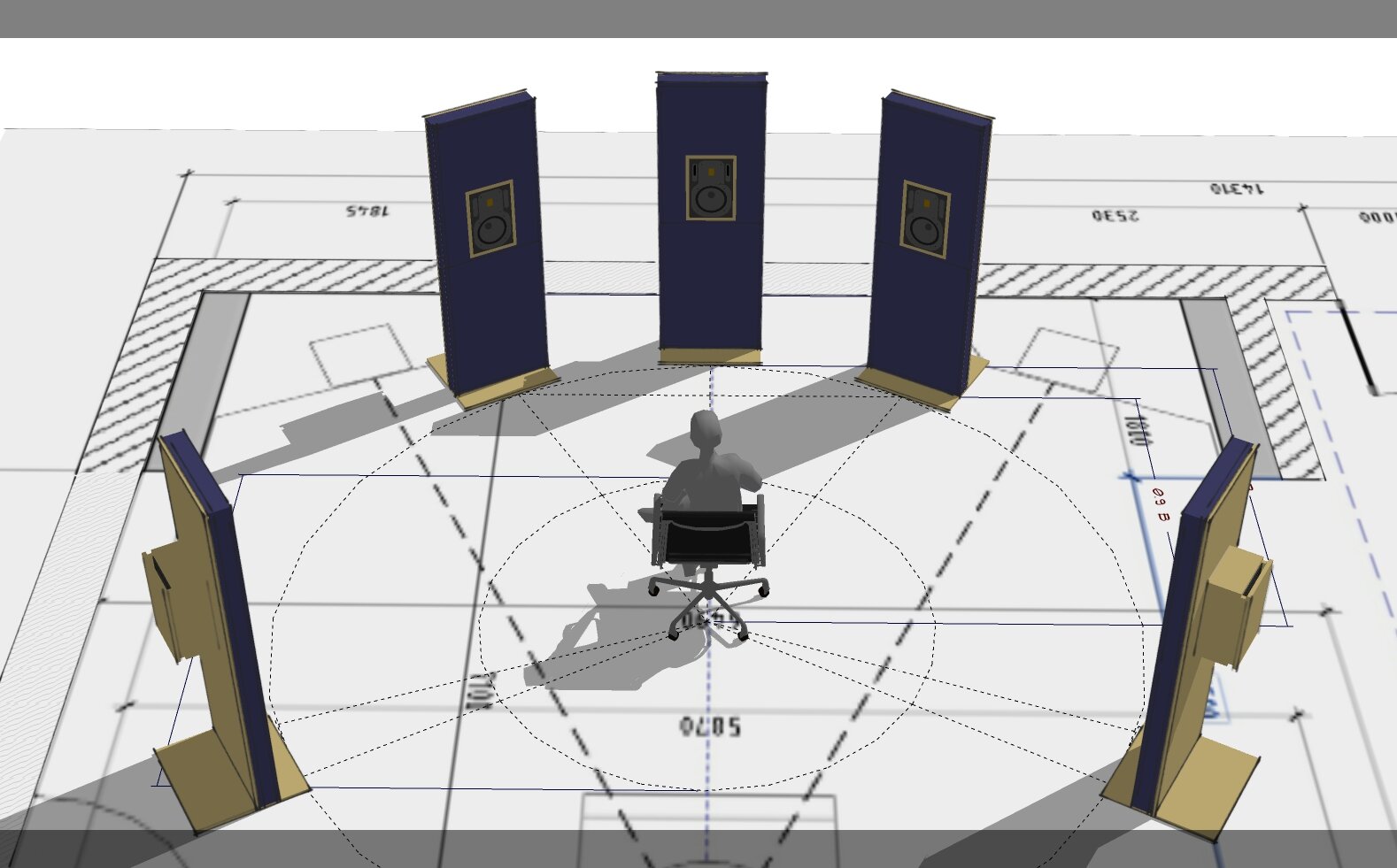-
Posts
2,176 -
Joined
-
Last visited
Posts posted by Glenn Stanton
-
-
the aliens were checking peoples ability to be compliant with instructions, however, they discovered that CW registration didn't result in a significant statistical basis so COVID-19... ?
-
in the video though, Melodyne is using ARA to somehow in sync with the takes and didn't seem to need to flatten them. flattening would seem to reduce or eliminate the ability to flexibly adjust things without un-flatten/re-flatten. maybe the ARA functions on the take lanes are not communicating on the take boundary/edits? we know the takes are already embedded in a single WAV file, so maybe the take edits need ARA to sync their locations data with Melodyne?
edit - @Noel Borthwick definitely not behaving like the Melodyne video which claims all versions support this... whether applying to each take lane or the entire segment, the non-selected portions of a take are flattened - effectively resulting in no ability to slide sections etc because the content of those are now zero'd out.
so for now, basically you need to get all your edits done before using Melodyne... which negates a bunch of the features like sliding sections and adjusting node timing, adjustment of pitch across takes in the same selection, etc...
maybe this needs a some love?
-
 1
1
-
-
On 5/18/2021 at 7:07 PM, Noel Borthwick said:
Does anyone on the planet read release notes?

there were some but they died off. now, it's just easier to wait hours or days frantically waiting for an answer from a posting (typically titled as "HELP! I NEED TO MAKE 473 TRACKS ON MY LAPTOP WORK BY TOMORROW??!!!") on a web forum rather than look to see if it was in the manual (also online, or offline for the paranoid) and thus answerable in minutes...
-
 1
1
-
 2
2
-
-
wow! what's scary is i've seen some guitar players with that number of foot pedals at their feet (in like a 4ft x 6ft tray)
-
 3
3
-
-
7 hours ago, msmcleod said:
Failing that you could cheat.... decades ago, I used get a "live" drum sound from a drum machine by playing it through a PA in a hall, and sticking mic's at the back of the hall!
speaking of "drum machines" - they once stuck John Bonham out in the hall, he was banging on his kit while waiting to get pulled back into the main room, and the sound was so good, they left him there and then recorded "When The Levee Breaks"... 'nuff said about hallway reverb...
-
yes for sure, however, Apple is still using the one button mouse lol ?
-
1 hour ago, Noel Borthwick said:
If you are that paranoid and mistrustful of software ...
the NSA was responsible for: Banking encryption, Google Search, Verisign PKI, Telephone monitoring, and perhaps BitCoin. EVERYTHING you do via phone, Internet, etc is being monitored. anywhere there are street cameras (including those stop-light camera ? are all monitoring people all the time. satellites bigger than Hubble have been in space pointed at Earth for 30+ years watching in multi-spectral ranges, picking up all radio signals, and likely all human heat signatures and thus related activity. none of silly TV re-tasking, there's a whole other set for zooming in... lol.
you just have to ask yourself - since JFK, did we get better or worse at conspiracy?
-
 1
1
-
-
sounds like contention between mycloud and fileexplorer. if you disable/pause mycloud does it still happen?
-
 1
1
-
-
to be honest - i don't usually mess with any of the stock settings except to choose what to display in the track section ? but i don't see anything there that would be a potential change in how the horizontal scrolling operates.
-
@Jeffrey @Teegarden there is an "EnablePluginMenuFix=1" item you can add to the initialization file under preferences. not sure this will fix the scrolling issue but it definitely fixed the heading in the inspector panel (which as noted a couple of times, had nothing to do with the theme as it was broken in build 141, fixed in 147, then broken again in 155).

not sure why anyone would want the option 0 ("break my menu") but maybe there is something in screen layout that requires an adjustment. ?
-
 1
1
-
-
i use my wireless keyboard and mouse. video monitor is a 70" TV so it's pretty visible across the room. the keyboard and mouse can operate up about 30' (transceiver type, not BT).
-
 1
1
-
-
hmmm. maybe some WAV based samples would be useful? i use some very old soundfont version or these: http://www.compositiontoday.com/sound_bank/percussion/castanets.asp but they might not be of the right quality in a commercial project.
-
cool thing is that was just their bar rig, their outdoor concert rig is much bigger ?
-
the "larger" UMC units have their own Behringer ASIO driver (e.g. my UMC 1820 has the 4.59 version ASIO driver) and it works very well.
-
 1
1
-
-
hmmm. i haven't seen this one before. for me it's the opposite, i have a bunch of wav files - bounced, edit, record, etc and it takes a bit of effort to clean up when archiving a project. i haven't seen a situation where all the tracks all exist in a single wav file - except when you are viewing the "take lanes", all of those for a given track exist in a single wav file (whereas using "takes as tracks" create individual files).
-
i like the Mp3Tag editor. lot's of features. freeware but also likes donations. ? https://www.mp3tag.de/en/index.html
-
 1
1
-
-
On 5/4/2021 at 8:38 PM, Paul Young said:
...If acquired by Gibson then it is time to worry.
or worse, Computer Associates. Where all good software goes to die.™
-
 1
1
-
-
i routinely connect and disconnect from a large monitor and IO to do things in other places. it's an old Dell 3521 but it seems to handle the switching around reliably. i also use it to remote session into my desktop machine (an even older Dell 545) which generally stays connected to its monitor and IO devices. i also sync the cakewalk projects and content folders between them using Google Drive, and my studio design programs and work folders using OneDrive. so far all devices seem ok with all the permutations.
a few important notes:
- no one except me is allowed on my machines. this avoids the "oh crap! i think i broke my laptop, can i use yours? oh crap! i broke your laptop too!" repeating disaster syndrome. thankfully everyone's phone is powerful enough to do their own work on the phone until i get around to repairing their laptop... ?
- there are no games (except solitaire) installed or played.
- updates on OS and apps are applied pretty regularly.
- _anything_ which even suggests misbehavior is uninstalled or rolled back ?
-
like other UI, CRTL+Z to undo or CRTL+Y to redo, or on similar functions, repeat. hopefully CTRL+Y is not already used by something critical or annoying ?
-
yeah the UR22 is a nice one, i have a mkII which just is so clean and reliable.
-
likely answer, someone didn't read the manual or search for answers before posting, then after waiting an eternity (10 mins or so) then decided to RTM or use a search engine (which shall remain nameless) to find the answer in another 2-5 min of "effort". after which their post for help is no longer relevant and thus cancelled via ghosting... ?
-
just curious - this happens if you delete the track - settings get lost, then a new track to the virtual synth does not then re-establish the settings? or a crtl-z (undo) after deleting a track does not restore the settings?
-
usually at a minimum i include title, composer, performing artist(s), album (if one), copyright notice, release year, genre(s), and track# (if applicable). if you go to the grammy website and lookup the metadata specs, there is a whole bunch more that could be included in the recordings as well as output files (where metadata can be embedded, or as labels on the media).
-
 1
1
-
-
Remo on the snare, Evans G1 or G2 on the toms, Aquarian on the kick ? although i just set up a friends kit with Remo all around except Aquarian on the kick, and i have to admit the heavy coated Remo on the toms actually sound nice with the brushes as well as sticks.



Melodyne on comp track, wipes original take lanes
in Instruments & Effects
Posted
@Clovis Ramsay - in the Celemony video - they make a claim it works with all versions - which makes sense to some degree because all the takes reside in a single WAV file and the UI is rendering the appearance of "multiple" tracks using markers etc to divide up the WAV. (guessing here but it seems a reasonable assumption). i have Editor which supports the full polyphonic but not Studio which support multiple tracks as well.